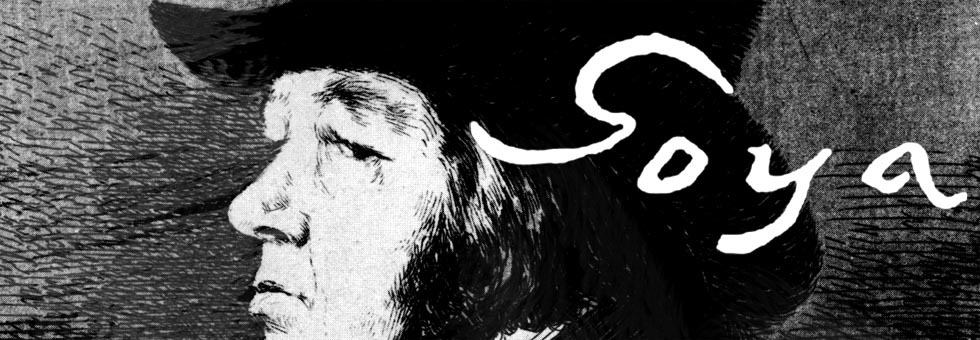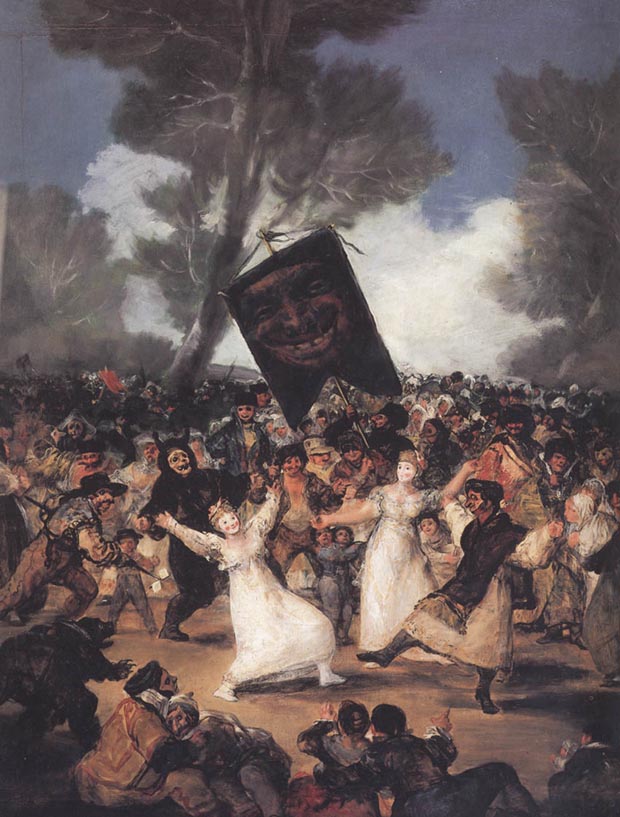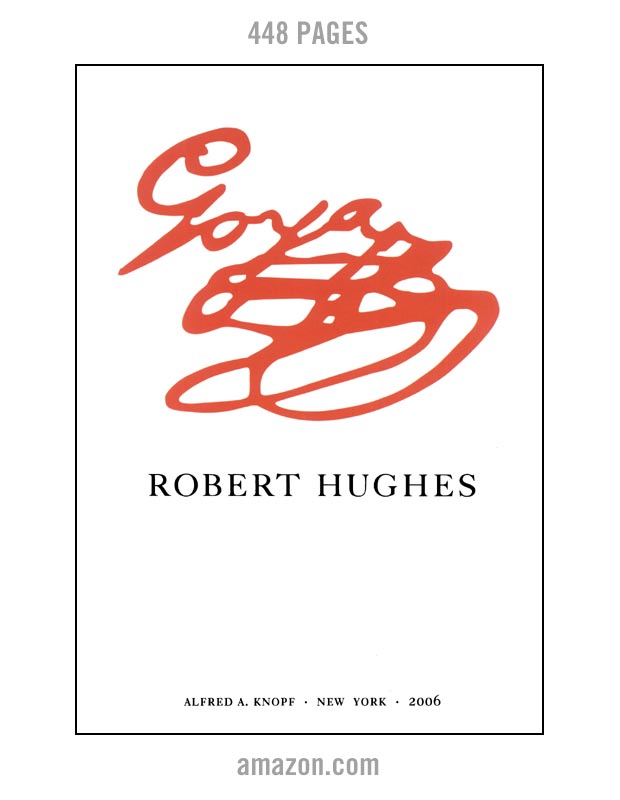Goya - Burial of the Sardine
Burial of the Sardine
1812-1819 Oil in Panel
32.5" x 24.5" inches
82.5cm x 62cm
Real Academia de Belleas Artes
de San Fernando, Madrid
To view a larger version [850 pixel wide] of
this image, click on the picture or go here.
This depicts the Corpus Christi Festival in Madrid on Ash Wednesday. The tone and activity of the festival shown here by Goya's composition seems to comment upon the frenzy, instead of the celebratory aspects of the event. There is a strong relationship of this picture to the Black Paintings, in that a heavier emphasis on quick brush work and outlining is employed. Also the general color tone is darkened and the central placement of the death figure.
Sarah Symmon's puts this picture as painted 1816. She says:
"'The Burial of the Sardine' is one of a number of panel paintings dating from the postwar period of the artists life that analyze people under the influence of mass hysteria. This carnival scene is inspired by the actual festival celebrated in Madrid in February, when, during three days of dancing, masquerade and irrational behavior, people could dress in harlequin costumes or as Moors, wear animal masks, cavort in the streets and accost passersby."
Page 276 from Goya by Sarah Symmons, Phaidon Press, 1998
"One of his most important canvases [Actually the painting is on wood panel. -Erik], the Burial of the Sardine, represents Ash Wednesday, the obsequies of carnival... He engraved a world turned upside-down, in other words, the Saturnalia; the donkey, the he-goat, the monkey, the cat, the bat, the crippled, the mad, the hanged, the man skeleton, men-chickens, men sawn in two, flagellants, the tribunals of the Inquisition, nightmares, flying men and bulls, brigands, rapes, tortures, the stake, murders, executions, abandoned children, human sacrifice, cannibals; foetuses, gnomes, giants and dwarfs, sorcerers, devils, spectres, the fates; prostitution, prisons, famine, shipwreck, fire, plague. Is this Spain? What other Spaniard has painted it? Yet who has touched with equal sureness upon the blind monsters of age-old depths, the symbols buried for thousands of years beneath our memory? Once the tapestries were finished, the portraits and the religious scenes put aside, he did not paint ten spectacles that do not belong to a troubled world, from prostitution to torture."
Page 133, from Saturn : An essay on Goya By Andre Malrauxm, Phaidon Publishers, 1957
"The Burial of the Sardine deals with the far more cheerful subject of a popular feast. It is also one of the most astonishing virtuoso performances to come down to us from Goya's brush. Rarely did Goya again reach such decisiveness of touch. Every brushstroke is a calligraphic marvel at the same time that it describes with consummate precision the expression of faces and the emotional charge of each stance or gesture. We have arrived here at the perfect balancing point between the early tapestry cartoons and the later Black Paintings. All the riotous gaiety of the former appeals to the eye from the surface of the painting. But in the darkening of the colors, in the masklike ambiguity of the faces (some of which are literally masked, while others, though unmasked, have all the impassive rigidity of masks), and especially in the overwrought gestures and expressions, one begins to feel the obscurely disturbing undertones of mass hysteria underlying the fiesta. Beneath the shrill songs and staccato dance rhythms there lurks the baleful basso ostinato that will ultimately erupt with full force in the howling mob of [the black painting] The Pilgrimage to San Isidro (La romerias de San Isidro)..."
Page 263, from Goya by Fred Licht: The Origin of the Modern Temper in Art, Abbeville Press, 2001)
AMAZON
Goya The Terrible Sublime - Graphic Novel - (Spanish Edition) - Amazon
"From this headlong seizure of life we should not expect a calm and refined art, nor a reflective one. Yet Goya was more than a Nietzschean egoist riding roughshod over the world to assert his supermanhood. He was receptive to all shades of feeling, and it was his extreme sensitivity as well as his muscular temerity that actuated his assaults on the outrageous society of Spain." From Thomas Craven's essay on Goya from MEN OF ART (1931).
"...Loneliness has its limits, for Goya was not a prophet but a painter. If he had not been a painter his attitude to life would have found expression only in preaching or suicide." From Andre Malroux's essay in SATURN: AN ESSAY ON GOYA (1957).
"Goya is always a great artist, often a frightening one...light and shade play upon atrocious horrors." From Charles Baudelaire's essay on Goya from CURIOSITES ESTRANGERS (1842).
"[An] extraordinary mingling of hatred and compassion, despair and sardonic humour, realism and fantasy." From the foreword by Aldous Huxley to THE COMPLETE ETCHINGS OF GOYA (1962).
"His analysis in paint, chalk and ink of mass disaster and human frailty pointed to someone obsessed with the chaos of existence..." From the book on Goya by Sarah Symmons (1998).
"I cannot forgive you for admiring Goya...I find nothing in the least pleasing about his paintings or his etchings..." From a letter to (spanish) Duchess Colonna from the French writer Prosper Merimee (1869).
GOYA : Los Caprichos - Dover Edition - Amazon






